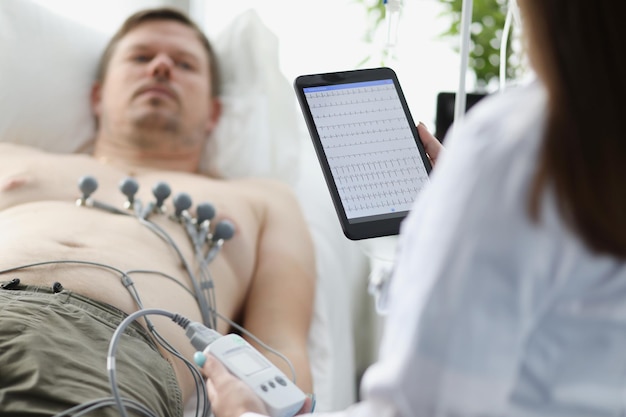EKG at Home
Create a requestEKG at home, also known as home-based electrocardiography, is a convenient medical procedure used to monitor the heart's electrical activity from the comfort of one's home. This procedure involves using a portable EKG device to detect heart conditions or monitor heart health over time without the need to visit a healthcare facility.

General
EKG at home involves the use of small, portable devices that can record the heart's electrical activity. These devices are designed to be user-friendly, making it easier for individuals to perform the test on themselves or with minimal assistance. The devices typically work by detecting the electrical signals of the heart through electrodes that are attached to the skin. Once the data is collected, it can be transmitted electronically to a healthcare provider for analysis. This method of monitoring is especially useful for detecting irregular heartbeats, monitoring heart conditions over time, and assessing the effectiveness of certain heart medications. By allowing patients to conduct EKG tests at their convenience, this procedure can significantly improve the efficiency of heart health monitoring. It is particularly beneficial for individuals with chronic heart conditions, those experiencing symptoms of heart problems, or anyone who may not easily access traditional in-clinic health services. The data collected can provide valuable insights into heart health and help guide treatment decisions without the need for frequent in-person visits to a healthcare provider.
Special Details
Who is it for?
- Individuals with chronic heart conditions such as arrhythmia
- Persons experiencing symptoms that may suggest heart problems
- Patients who require monitoring of heart health over time
- Individuals who have difficulties accessing in-clinic healthcare services
Recovery Period
- The procedure is non-invasive and does not require a recovery period
- The length of monitoring can vary based on individual needs, ranging from minutes to several days
Potential Risks and Side Effects
- Skin irritation or allergic reaction to adhesive electrodes
- Incorrect placement of electrodes may lead to inaccurate readings
- Potential for anxiety or stress caused by self-monitoring
Alternative Treatments
- In-clinic EKG monitoring
- Holter monitor - another portable device for longer-term heart monitoring
- Event monitor - used to record heart activity over a few days to months during symptoms
Success Rate
Highly effective for continuous monitoring and detection of irregular heart activities when used correctly.
Procedure step-by-step overivew
- Clean the skin where the electrodes will be placed to ensure good contact.
- Affix the self-adhesive electrodes to the chest, arms, or legs as instructed.
- Connect the electrodes to the portable EKG device.
- Start the device to begin recording the heart's electrical activity.
- Follow the device instructions for the duration of the monitoring period.
- After completing the monitoring, remove the electrodes and send the data to a healthcare provider if necessary.
Prices
Why Do Prices Vary?
- Cost of the portable EKG device
- Brand and features of the device (e.g., Bluetooth connectivity, app support)
- Cost of possible subscription services for data analysis and storage
- Shipping costs, if the device is purchased online
- Turkey
- 100-200 USD
- Czech Republic
- 150-250 USD
- Croatia
- 150-250 USD
- Lithuania
- 150-250 USD
- Poland
- 150-300 USD
- Germany
- 200-350 USD
- Switzerland
- 250-400 USD
- France
- 200-350 USD
- United Kingdom
- 200-350 USD
- United States
- 100-300 USD
- Canada
- 100-300 USD
- Australia
- 150-300 USD